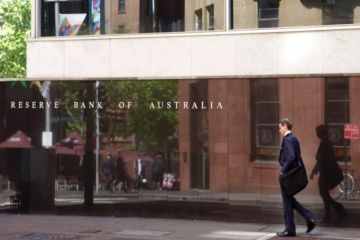Superannuation 'fat cats': Banks hit back against claims of high fees and low returns

Australia’s big banks have rejected the findings of a study this week labelling them “fat cats” for charging high fees and delivering low returns through their superannuation products.
ANZ, AMP and CBA were ranked as the worst offenders by the report, and while all three took aim at the study – ANZ called it “substantially overstated” – the figures have reignited the debate around the cost of super.
The report showed some young Australians are in a position to lose $100,000 from every $400,000 they save, versus an industry average, due to their fund’s high fees and underperformance, according to an analysis of over 4100 funds by digital investment adviser Stockspot.
Funds that underperformed other funds by more than 10 per cent were termed “fat cats”, and two-thirds of all fat cat funds are said to be managed by the big four banks.
ANZ had more fat cat funds than the rest of the banks, while AMP had the lion’s share of the money invested. Commonwealth Bank on the other hand moved up the rankings, climbing to third on the ladder this year.
“The fees proposed in the report are substantially overstated and do not take into account what customers actually pay,” an ANZ spokesperson told Domain, while AMP said their superannuation funds had different investment options, risk profiles and other variable metrics, which made it difficult to make accurate like for like comparisons.
“Our advice to customers is to thoroughly research the options available and consider what is best taking into account their risk profile, values and stage of life,” AMP said.
Meanwhile a Colonial First State official flipped the research by pointing to the fact Colonial has 15 times more “fit cat” funds, than the best performing fund highlighted in the report, with 75 in total.
“We have an investment governance framework which includes monitoring the underperformance of funds and where appropriate, a fund is terminated or replaced,” the spokesperson said.
Despite the swift defence, the report confirms that funds run by major banks tend to deliver lower returns and cost more, according to Mathew Linden, Director of Public Affairs at Industry Super Australia.
“Audited data from APRA shows the difference in returns is around 2 per cent a year on average which over a working life will reduce a retirement balance by more than $200,000,” Mr Linden said.
However, Industry Super funds weren’t spared in the Stockspot report, with 2 per cent of industry super funds labelled “fat cats”, compared with 13 per cent of Retail Super funds.
“Australians don’t realise paying 2 per cent is hundreds of thousands of dollars over a lifetime,” Stockspot CEO Chris Brycki told Domain.
“Every cent you don’t pay in costs are ones that stay in your account.”
We recommend
We thought you might like
States
Capital Cities
Capital Cities - Rentals
Popular Areas
Allhomes
More






